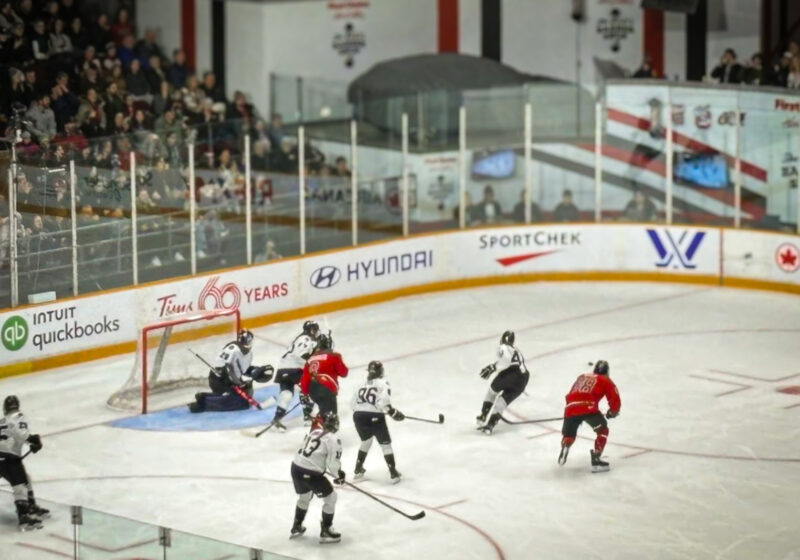This year’s Australian Open was a perfect example of the differences in men’s and women’s tennis.
Marcelo Rios, who lost in the quarterfinals, criticized the depth of women’s tennis and said that the women’s game is a joke.
It is true that the top women seem to win almost every Grand Slam event, but I do not think that it is a strike against the women’s game. I think it just shows how different men’s and women’s tennis are.
There are no dominant players in men’s tennis at the moment. Pete Sampras and Andre Agassi have combined for 20 Grand Slams, but both are getting old.
Sampras used to dispatch almost every opponent with ease, but he only won one tournament in 2000 and 2001 combined. Agassi won the 2001 Australian Open, but injuries made him withdraw before this year’s tournament.
The tournament down under showed just how much depth ? and how little dominance ? there is in the men’s game.
Lleyton Hewitt finished 2001 as the No. 1 player in the world after winning the U.S. Open. However, the 20-year-old Aussie is less well known than oft-injured countryman Patrick Rafter and lost in the first round.
Gustavo Kuerten has won three Grand Slam titles, but they have all been at the French Open. The Brazilian, who was No. 1 for much of 2000, is not that good away from the clay courts and it is not surprising that he lost in the first round.
Russia’s Yevgeny Kafelnikov has always been good, but never great. He has won two Grand Slam titles, but lost in the second round this year.
Andy Roddick is America’s best hope for future domination. The 19-year-old big server talks the talk, but bad ankles have prevented him from walking the walk so far.
Tim Henman is Great Britain’s top player, but he is best at home. He has reached the semifinals at Wimbledon three times, but has never made it past the fourth round at any other Grand Slam.
Rios took over the No. 1 spot from Sampras in 1998, but has battled injuries ever since.
Tommy Haas made a tremendous run to reach the semifinals, but just isn’t good enough to be a consistent threat at Grand Slams. The German has only reached a Grand Slam semifinal one other time ? at the Australian Open in 1999.
Marat Safin was probably the most well-known of all the men’s quarterfinalists. The Russian won the U.S. Open and was No. 1 for part of 2000, but has been inconsistent in his career.
Thomas Johansson took advantage of the lack of dominant players to win his first Grand Slam. The Swede had never before made it past the quarterfinals at a Grand Slam.
The “Who’s that?” nature of the semifinals at recent Grand Slams does not mean that men’s tennis is not enjoyable, however.
Eight of the matches after the third round went to five sets and only two were decided in three.
The semifinal between Safin and Haas was a tremendous match until it was delayed by rain and Haas got tired.
The men do tend to focus on serving a lot, but they are also capable of hitting breathtaking winners and staging electrifying rallies.
The women’s game is different for a number of reasons, primarily that the top women are so much more dominant than the top men. Lindsay Davenport, who had made it to the semifinals in nine of the previous 13 Grand Slams, was injured for the tournament, but there were still three top players.
Martina Hingis has reached the Australian Open final six consecutive times and has won three. She has been one of the top players, including a record 178 weeks at No. 1, since she won all of the Grand Slam events except the French Open in 1997.
Venus Williams won Wimbledon and the U.S. Open in 2000 and 2001. She has yet to be ranked No. 1, but she has been one of the most feared players since she joined the tour.
Jennifer Capriati overcame disappointments as a child prodigy to get back on the tour and reach the fourth round in four Grand Slam events in 1999 and 2000. She has now reached the semifinals in five straight Grand Slam events and has won three titles.
Kim Clijsters was the only unknown in this year’s semifinals and she is a rising star.
The women also play a much different style of tennis. They cannot serve their way back into matches as easily as the men, so they have to concentrate on every point. They can engage in baseline rallies that keep you on the edge of your seat for minutes, and there are very few easy points.
The women’s final this year was one for the ages. Capriati trailed Hingis 4-6, 0-4 before saving three match points to force a tie-breaker in the second set. After saving another match point, she won the tie-breaker and went on to win the third set.
Men’s and women’s tennis both have their faults, but they are both a lot of fun to watch. Just don’t expect the same things from both of them.
Jacobs can be reached at bjacobs@campustimes.org.

